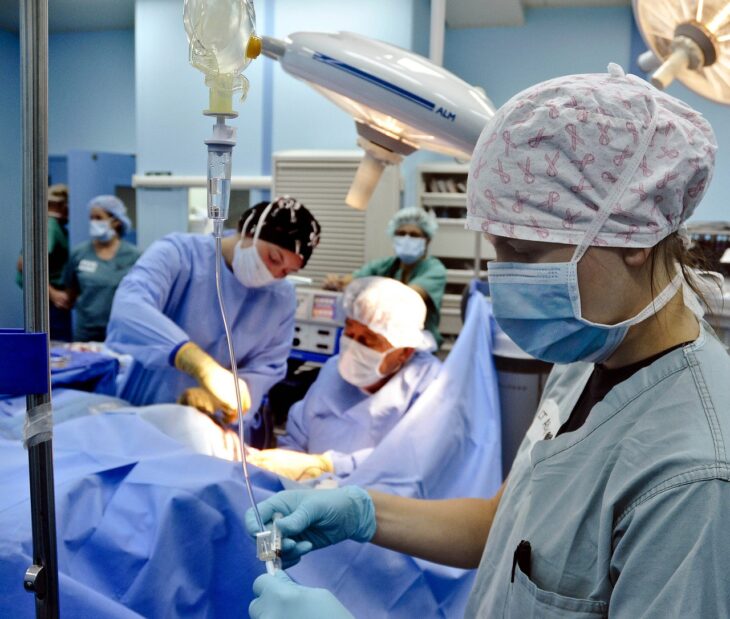
When you experience infertility, you want to know why. There are many factors affecting fertility, both male and female. There are just as many ways to overcome a diagnosis of infertility, depending on the root cause.
For tubal factor infertility the cause most often relates to a blockage in the fallopian tube preventing the egg from passing to meet the sperm. Your doctor may suggest surgery as an option in these cases and depending on the type of blockage and how severe there are a few different tubal surgery options. Here we present you with the most common tubal surgery options.
First a little biology. The fallopian tubes connect your ovaries to the uterus. When your ovaries release an egg each month that egg travels through the fallopian tubes and into the uterus. Typically, a fertilized egg implants in the uterus and an unfertilized egg sheds with the uterine lining during your period.
Any blockages along the way prevent the egg from entering the uterus. This results in infertility. But the good news? Thanks to modern reproductive medicine, you have options.
How Your Doctor Determines You Need Tubal Surgery
The symptoms of blocked fallopian tubes are fairly vague. You may present with some pain but in most cases your first symptom is an inability to conceive. If your doctor suspects a blockage, they perform a procedure called a hysterosalpingogram.
When you have a hysterosalpingogram, your doctor inserts a catheter through your vagina and cervix and into your uterus. They inject a contrast dye into your uterus which because the uterus and fallopian tubes connect, flows into your tubes. As the dye flows a technician captures a series of images revealing any issues along the way. You may have blockages or uterine abnormalities preventing conception. A hysterosalpingogram shows your doctor how to proceed.
Types of Tubal Surgery and Procedures
There are some tubal surgical procedures performed using microsurgery. These types of procedures are the most common and usually performed using laparoscopy. Laparoscopic surgery differs from open surgery as the laparoscope only needs a small incision. Here are the most frequent and common tubal surgeries:
Salpingectomy: The removal of a portion of the fallopian tube takes place in conjunction with IVF. Hydrosalpinx is a condition whereby the area with the blockage fills with fluid. Hydrosalpinx has a few different causes. Among them are chlamydia, endometriosis, pelvic surgery, adhesions, and some types of tumors. Removal of the affected part of the fallopian tube improves the chances for successful IVF.
Salpingostomy: This surgical procedure involves creating an opening in the blocked tube close to the ovary. For females with hydrosalpinx, a salpingostomy is another method used for restoring fertility. Because it is common for scar tissue to grow over the surgeon-created opening and re-block the tube your doctor only uses salpingostomy in certain cases.
Tubal Ligation Reversal Surgery: Sometimes called tubal reanastamosis, this procedure also applies if a portion of the fallopian tube suffers damage from disease or you had your tubes “tied” in order to prevent pregnancy but now you wish to conceive. The surgeon removes the blocked or diseased part of the tube and then reconnects the two healthy ends. Your doctor performs this type of tubal surgery through an incision in your abdomen using laparoscopic methods.
Fimbrioplasty: Your doctor may decide on a fimbrioplasty when your blockage is close to your ovary. The fimbriae are minute finger like projections that move the released egg through the tube toward the uterus. A fimbrioplasty preserves the fimbriae while clearing the blockage. Your doctor rebuilds the fimbriae, and the egg can move through the tube.
Selective Tubal Cannulation: This is a type of non-surgical and minimally invasive procedure your doctor may use if the blocked part of the tube is close to the uterus. Using a speculum to open your vagina the doctor inserts a small flexible tube called a cannula or catheter through your vagina and cervix and directly into your uterus.
By injecting a contrast liquid directly into your uterus, the doctor takes an x-ray or image. This allows your doctor a clear picture of the exact location of the blockage. The doctor then inserts a smaller cannula removing the blockage.
What Are the Odds for Conception Following Tubal Surgery?
Your chances for pregnancy after any of the above procedures improve when you opt for IVF. Without IVF your odds, depending on the severity of your blockage and success of your surgery, range between 9%-69%, according to a report by the NIH. This is especially true if your doctor removes a large portion of your fallopian tube, or you seek a reversal of your previous tubal ligation. There may also be additional factors compromising your fertility. Your doctor takes all that into consideration and apprises you of your best path to pregnancy.
Get the Answers You Need
If you’re struggling with your fertility and want answers, contact LA IVF and schedule a consultation. We’ll help you find out the cause behind your fertility issues and how we can help. Together we will find a way.










